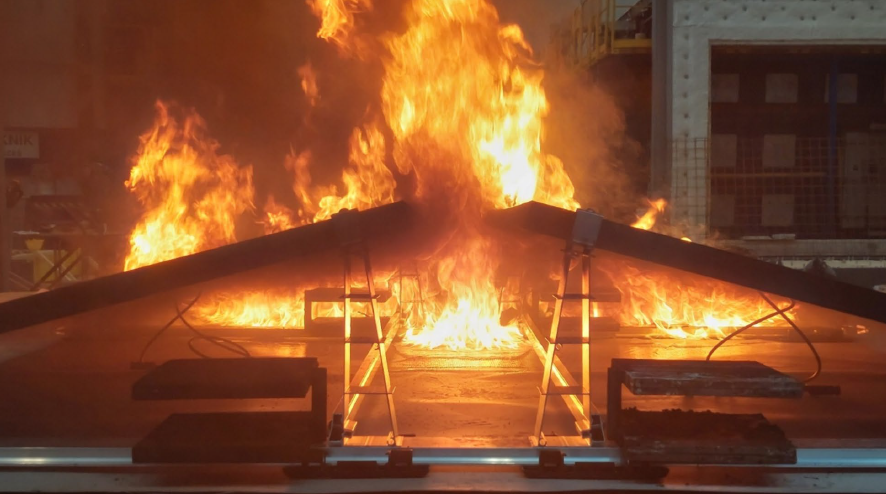
Clean Energy Associates (CEA) has inspected more than 600 industrial PV systems and has found widespread safety risks, largely stemming from poor installation practices, but many issues are easily identifiable and fixable.
As rooftop solar adoption accelerates across the industrial sector, CEA has flagged a rise in fire hazards linked to poor installation practices. After inspecting more than 600 commercial PV systems, CEA found “a high number of significant risks to plant safety, which can also result in high costs for the owner.”
Most safety issues stem from improper assembly, with many easily identifiable and correctable if addressed early, according to Javier Mota, senior manager of engineering services at CEA, and Carlos Acinas, project manager of engineering. They said wiring and electrical connections – such as poorly assembled connectors or loose terminals – are the leading fire starters, though faulty inverters, degraded PV cells, dirt buildup, overheating, and short circuits also contribute.
“The most common electrical risks are short circuits, faulty connections, or poorly assembled connectors,” said Mota. “The most common thermal risks are excessive temperatures in modules, cables, or inverters due to poor design, installation, or ventilation.”
Mechanical risks such as physical damage to modules from impacts – like hail or falling objects – can also cause fires. Battery fires or explosions may result from overcharging, short circuits, or internal failures in lithium-ion batteries.
To reduce fire risk, Acinas emphasized the need for professional installation by certified technicians and compliance with safety standards. He added that systems must use high-quality components – such as site-specific cables, connectors, and inverters – and undergo regular maintenance to detect faults early through inspections of wiring and connections.
Mota said that in the event of a fire, the system and any connected power sources, including batteries, must be disconnected first. Emergency services should then be notified and provided with information on the PV system and locations of key components, he said. Mota warned against touching the system or attempting to extinguish the fire without proper training, noting that parts may remain energized even after shutdown.
Safe installation on industrial rooftops requires certified professionals, components suited to site conditions, protection against overload and thermal faults, and a structured maintenance plan to ensure long-term system integrity.
“If a fire is detected early and extinguished quickly, some components of the photovoltaic installation may be salvageable,” said Mota. “However, a thorough inspection is essential to assess the damage. In many cases, especially if there is damage to cables, connectors, or inverters, it may be advisable to replace the affected components to ensure the safety and proper functioning of the system.”
This content is protected by copyright and may not be reused. If you want to cooperate with us and would like to reuse some of our content, please contact: editors@pv-magazine.com.
Source link


